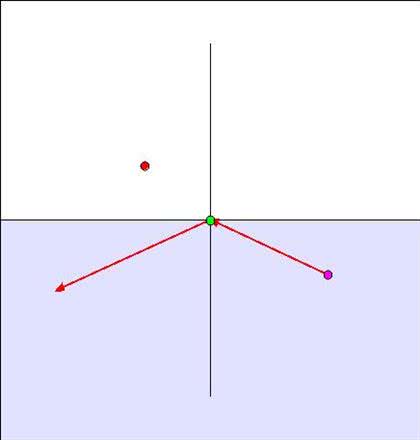PHYS 1C Lecture Notes - Lecture 11: Thin-Film Interference, Soap Bubble, Transverse Wave

When light passes from one medium to another, the
wavelength will change because the speed of light is
different in the two media
-
The index of refraction, n, of a medium can be defined
-
Index of Refraction
As light travels from one medium to another, the frequency does not
change
-
Both the wave speed and the wavelength do change
-
Frequency Between Media
Have you ever looked at a soap bubble and observed patterns of
different colors
-
Light wave interference can also be observed in thin films (such as an oil
film on water or soap bubbles)
-
The interference in thin films is caused by not only a path length
differnce but also a phase shift as the light ray reflects off of a different
medium
-
A light wave will undergo a phase change of 180 degrees upon reflection
from a medium of higher index of refraction than the one in which it was
traveling
-
So, a light wave traveling in air will undergo a 180 degree phase shifts if
it reflects off an oil surface
-
This is similar to the reflection of a transverse wave that we observed
earlier off of a rigid surface
-
A light wave will NOT undergo a phase change upon reflection from a
medium of lower index of refraction than the one in which it was
traveling
-
So a light wave traveling in oil will not undergo a phase shift if it reflects
off an air boundary
-
This is similar to the reflection of a transverse wave that we observed
earlier off of a free surface
-
Ray 1 (in air) reflects off the film surface and undergoes a phase
change of 180 degrees compared to the incident ray
○
With light incident on a thin film with another thin film of higher index of
refraction below the first:
-
Interference in thin films
(11) Lecture 27B Thin Film Interference
Friday, April 27, 2018
1:00 PM
week 4 Page 1
Document Summary
When light passes from one medium to another, the wavelength will change because the speed of light is different in the two media. The index of refraction, n, of a medium can be defined. As light travels from one medium to another, the frequency does not change. Both the wave speed and the wavelength do change. Have you ever looked at a soap bubble and observed patterns of different colors. Light wave interference can also be observed in thin films (such as an oil film on water or soap bubbles) The interference in thin films is caused by not only a path length differnce but also a phase shift as the light ray reflects off of a different medium. A light wave will undergo a phase change of 180 degrees upon reflection from a medium of higher index of refraction than the one in which it was traveling.






